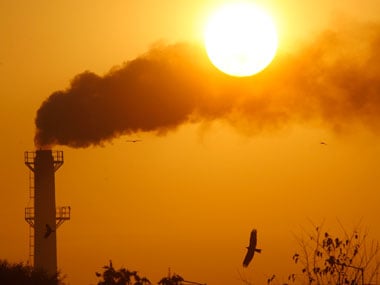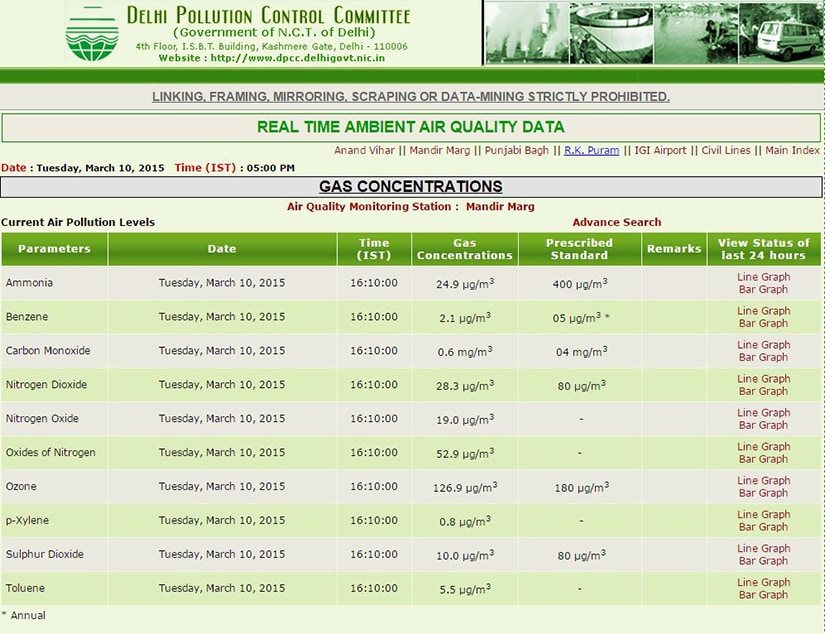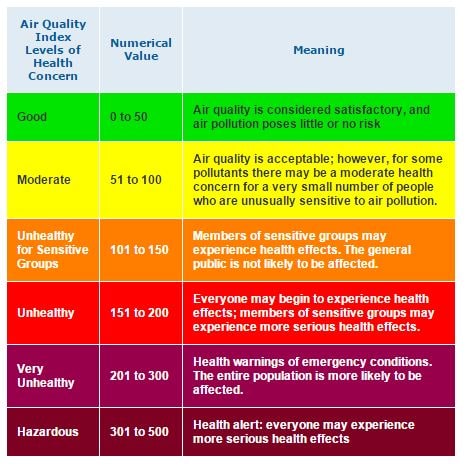Greenpeace has asked the government of India to stop being in denial over the fact that its national capital has a severe pollution problem, and asked it to take a lesson from China. [caption id=“attachment_2146281” align=“alignleft” width=“380”]  Representational image. Reuters[/caption] “India is still in denial about the alarming pollution levels in the national capital. Our government still want to compare itself to Beijing but the Chinese city is already moving ahead. It’s pollution levels have reduced, they have put in place a 5-year plan, monitoring systems and an alarm system (to warn of high pollution levels),” Greenpeace campaigner Aishwarya Madineni told Firstpost. Madineni was referring to a surprise move by the environment ministry to ‘validate’ real-time data before it is put out publicly. Until now, the Delhi Pollution Control Committee, which runs a real-time air pollution monitoring system, released ‘raw’ or ‘unedited’ air quality data on its website, the Times of India reports, but last week, the Prakash Javadekar-led ministry pulled up DPCC officials and ordered that the data be validated by the Central Pollution Control Board before it goes up on their website. While the website never really provided 24x7 real time data on pollution, when Firstpost checked at 5 pm, the DPCC website had pollution levels as of 4.10 pm - a delay of almost one hour. “The data has been stopped because there is too much scrutiny of what’s being released online. We are pulled up for it,” an official told TOI, adding that “the data may not even be available anymore as it will soon have to be validated before release.”  The Indian government has been consistently facing international pressure from environment NGOs and watchdogs over the rising pollution levels in the national capital. Facing criticism and unwilling to accept that the national capital has the world’s most polluted air, the government, in October last year, decided to come up with a National Air Quality Index seeking to create a comprehensive index of measuring air pollution levels. According to this report in The Hindu, the government had set up an expert committee so that India could evolve its own standards for pollution index in cities, this, despite India already having a CPCB and state pollution control boards. Speaking to The Hindu, Susheel Kumar, the then chairperson of CPCB, said, “We wanted to come out with our own Index; it is a technical AQI and not a government supported one,” he said, adding that the state governments have agreed to adopt the index which will have six categories - good, satisfactory, moderately polluted, poor, very poor and severe. Madineni said the government needed to make their intent behind reevaluating the pollution data public. “If at all they are trying to fudge data, it will be a defeating purpose for themselves as there will be questions raised by international NGOs and environment monitoring groups who are simultaneously tracking pollution levels,” she told Firstpost. Moreover, in an air-quality monitoring survey carried out by Greenpeace inside five schools across Delhi, it was found that the PM2.5 levels were 4 times the Indian safety limits and 10 times that of the World Health Organisation’s. “This has reinstated the fact that air pollution levels inside Delhi’s schools are alarmingly high and that children are consistently breathing bad air,” Madineni said. In a meeting with Greenpeace campaigners on Tuesday, Delhi Health Minister Shri Satyendra Jain accepted the proposal and ensured that he will look into the aspect of health advisories for schools in Delhi, the environment NGO said. The 2014 report of the Ambient Air Pollution (AAP) database contained results of outdoor air pollution monitoring from almost 1600 cities in 91 countries. Delhi had the highest concentration of PM2.5 — particulate matters less than 2.5 microns– form of air pollution, which is considered most serious and can cause respiratory diseases and other health problems. In Delhi, the situation was so bad, that its air had PM2.5 concentrations of 153 micrograms and PM10 concentrations of 286 micrograms–much more than the permissible limits, the WHO report said. In comparison, Beijing, which was once considered one of the most polluted cities, had PM2.5 concentration of 56 micrograms and PM10 concentration of 121 microgrammes. But the government was soon to refute the UN-backed report. “Delhi is not the dirtiest… certainly it is not that dangerous as projected,” AB Akolkar, a member secretary of the Central Pollution Control Board of India told Reuters, suggesting that the health agency had overestimated levels. The pressure got worse for India after the United States government decided to take an active role in monitoring air pollution levels in the country. Earlier this year, during President Barack Obama’s visit to India, the two nations were discussing the launching of the Environmental Protection Agency programme - AirNow International - as early as March. EPA’s Administrator Gina McCarthy confirmed the development at a treaty signing event with US Secretary of State John Kerry.
“Five years ago we launched AirNow-International in Shanghai, and we made further studies in other cities around the world, and a few weeks ago we announced that AirNow-International is going to be in India. We came out of the President’s recent trip knowing that this was an issue of importance to the President, but also to India as well, and our experts will be taking off in a few weeks to get this program started,” she said.
Furthermore, the United States already monitors air pollution levels at its embassies. The data of the New Delhi office as well as those in other Indian cities can be found here. What is PM 2.5? PM or particulate matter refers to the microscopic solid or liquid matter that is suspended in the Earth’s atmosphere. PM includes dust, dirt, soot, smoke, as well as liquid droplets. Particles which are less than 10 micrometers in diameter (PM10) pose a health concern because they can be inhaled into and accumulate in the respiratory system. Air pollution is monitored for PM10 and PM2.5,– particles smaller than 10 or 2.5 microns.  The Central Pollution Control Board reported Delhi’s average PM 2.5 level in 2013 as 153 ng/m3 (nanogram/cubic metre), based on hourly measurements at six different stations which is 15 times the WHO guideline and 3.8 times the national standard while Delhi’s average is also 80 percent higher than the average in Beijing. The WHO, in its 2014 report further revealed that 13 of the 20 most polluted cities in the world were in India. The report further said that in 2012 around 7 million people died - one in eight of total global deaths – as a result of air pollution exposure.


)

)
)
)
)
)
)
)
)



